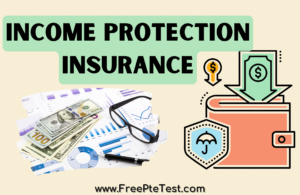In the Pearson Test of English (PTE) exam, the Reading section presents a variety of question types to evaluate your comprehension and analysis skills. Among these, the ability to interpret and analyze graphs, charts, and diagrams is of paramount importance. These visual aids convey complex information in a concise manner and are commonly used in academic and professional contexts. In this blog, we’ll delve into effective strategies for conquering PTE Reading tasks that involve graphs, charts, and diagrams.
The Power of Visual Information:
Visual aids such as graphs, charts, and diagrams condense complex data into easily digestible formats. They serve as powerful tools to convey trends, comparisons, relationships, and patterns. However, interpreting these visual elements requires a keen eye and a systematic approach.
1. Understand the Key Components: Before attempting to answer questions, take a moment to understand the different parts of the visual aid. Identify the axes, labels, units of measurement, data points, and any titles or legends. This initial step sets the foundation for accurate interpretation.
2. Recognize Trends and Patterns: Pay attention to the overall trends and patterns depicted by the visual aid. Is there an upward or downward trajectory? Are there fluctuations or consistent values? This step helps you grasp the main message the visual aid is conveying.
3. Analyze Data Relationships: If the visual aid compares multiple sets of data, analyze how they relate to each other. Are there correlations? Is one set of data dependent on another? Understanding these relationships is crucial for answering questions accurately.
4. Refer to Labels and Legends: Labels and legends provide context and information about what is being represented. Refer to them whenever you encounter unfamiliar symbols, colors, or terms. This practice prevents misinterpretation.
Interpreting Graphs, Charts, and Diagrams:
PTE Reading questions based on graphs, charts, and diagrams come in various formats, including multiple-choice, fill-in-the-blanks, and summary writing. Here’s how to tackle each type effectively:
- Multiple-Choice Questions:
- Read the question stem carefully before looking at the visual aid.
- Analyze the choices and eliminate those that do not align with the visual aid.
- Refer back to the visual aid to verify your chosen answer.
- Fill-in-the-Blanks Questions:
- Identify the missing information by closely examining the visual aid.
- Consider the context and ensure the filled-in word or phrase makes logical sense.
- Summary Writing Questions:
- Summarize the main points presented by the visual aid.
- Use appropriate vocabulary and cohesive phrases to convey the information accurately.
To excel in interpreting graphs, charts, and diagrams, practice is key. Engage in regular exercises that involve different types of visual aids and questions. As you practice, you’ll refine your skills in extracting essential information, recognizing patterns, and drawing accurate conclusions.
- Mastering the skill of analyzing and interpreting graphs, charts, and diagrams is essential not only for success in the PTE Reading section but also for comprehending visual information in various academic and professional contexts. By understanding the key components, recognizing trends, analyzing data relationships, and effectively approaching different question types, you’ll be well-equipped to excel in this aspect of the PTE exam. Remember, practice and a systematic approach are your allies on the journey to achieving excellence in PTE Reading.



